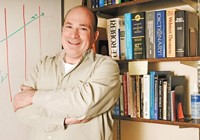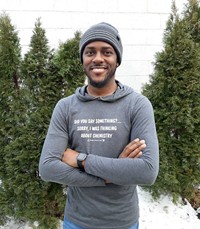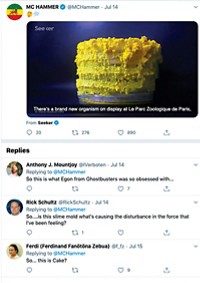Advertisement
Grab your lab coat. Let's get started
Welcome!
Welcome!
Create an account below to get 6 C&EN articles per month, receive newsletters and more - all free.
It seems this is your first time logging in online. Please enter the following information to continue.
As an ACS member you automatically get access to this site. All we need is few more details to create your reading experience.
Not you? Sign in with a different account.
Not you? Sign in with a different account.
ERROR 1
ERROR 1
ERROR 2
ERROR 2
ERROR 2
ERROR 2
ERROR 2
Password and Confirm password must match.
If you have an ACS member number, please enter it here so we can link this account to your membership. (optional)
ERROR 2
ACS values your privacy. By submitting your information, you are gaining access to C&EN and subscribing to our weekly newsletter. We use the information you provide to make your reading experience better, and we will never sell your data to third party members.
Women In Science
Newscripts
The undercover origins of the N95, and a science-friendly maker festival
by Andrea Widener
May 14, 2022
| A version of this story appeared in
Volume 100, Issue 17

From bras to face masks
In 2009, Newscripts shared the tale that the idea for 3M’s molded particulate-filtering face masks likely came from bras, but the company’s official history of the technology made no mention of unmentionables.
Recently, we heard from Paula Rees, who uncovered evidence of the brassiere-mask connection in the archives of designer and 3M consultant Sara Little.
Little worked as decor editor at the magazine House Beautiful for 18 years before becoming a consultant to companies like Corning and 3M on products they should develop for the home. “She seemed to be interested in everything from foodstuffs to appliances to home storage,” says Rees, president of the Sara Little Turnbull Center for Design Institute and a former mentee of Little, who died in 2015.
In June 1958, Little gave a presentation to 3M recommending the company expand its nonwoven-material markets, Rees says. The presentation mentions a large array of potential items 3M could make, including fashion items like shoulder pads and “nurses’ garments, industrial safety garments, and caps,” she explains.
3M assigned Little to work on brassieres, Rees says, and the cup shape of the bras prompted her to consider turning them into face masks. Rees and her colleagues found examples of the masks in Little’s records in a box of what they initially thought were bra cups. Tucked inside were prototypes of the masks.
“It’s the bubble mask with the little metal nose clip,” she says, and an elastic band that goes around the back of the head. There were a series of different masks Little was experimenting with, some painted with latex on the inside, some with a foam piece on the nose. The initial 3M masks didn’t work well enough for medical uses, but Little continued to work with 3M on the masks and other products until her contract ended in 1982, Rees says.
Little’s inspiration for improving medical face masks likely came from personal experience, Rees says. Her sister and father both died in the years leading up to the 3M contract, and her mother was also ill around that time. Little wore a mask when visiting her mother, and “she just hated it,” Rees says. After the last few years, many of us can relate.

Science-friendly festival
Little’s diverse interests would be a good fit for Electromagnetic Field (EMF), a UK-based festival for makers, hackers, and more.
In June, up to 3,000 people are expected to attend EMF’s 2022 festival on the grounds of Eastnor Castle, about 200 km northwest of London. While camping might not immediately bring to mind high-speed internet, this festival provides excellent Wi-Fi along with its sweeping series of talks, performances, and exhibits. Geeks are explicitly invited.
EMF’s creators modeled the original 2012 event on an outdoor camp for hackers, but they had broader interests than computers right from the start, says Sam Cook, one of its volunteer organizers. The festival includes talks on topics as wide ranging as electrical engineering, legal burial methods, microbiology, and how to plan a first ascent of a mountain. “I think as a community we are very much interested in pretty much everything,” Cook tells Newscripts. The festival is also trying hard to be open to the widest range of people by offering free childcare and, as of 2018, closed captioning for talks.
Although the festival is not explicitly about science, “there are definitely a lot of people in the sciences who are involved,” says Cook, who has a PhD in particle physics and currently works as a programmer.
In fact, they say, the festival could likely use a few more chemists in the mix.
Please send comments and suggestions to newscripts@acs.org.





Join the conversation
Contact the reporter
Submit a Letter to the Editor for publication
Engage with us on Twitter